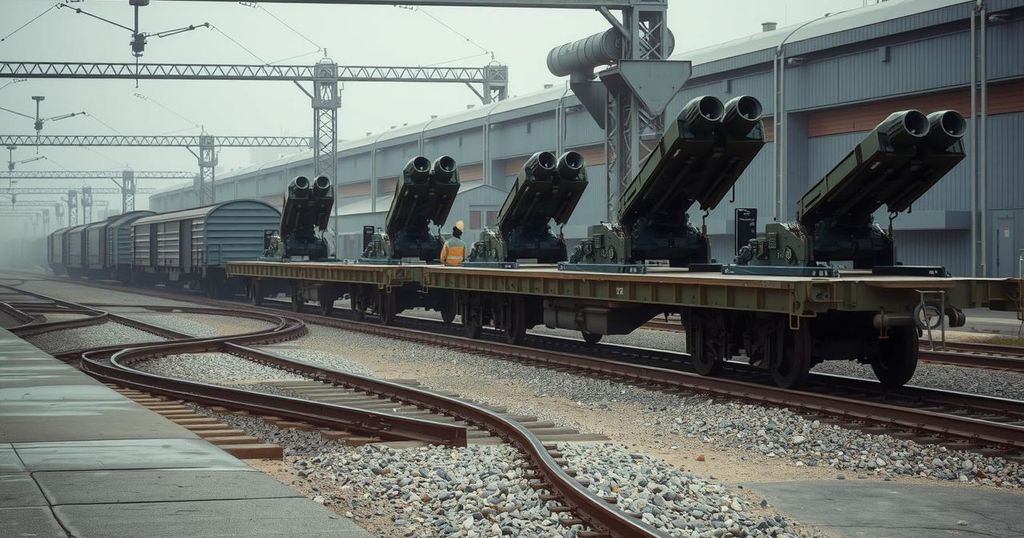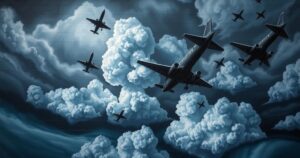North Korean Koksan Artillery Guns in Crimea: Implications for Ukraine Conflict

North Korean Koksan artillery guns have been spotted in Crimea, signaling potential direct military involvement in the Ukraine conflict. The weapons could pose a significant threat to Ukraine, with speculation about North Korean ground troops joining the fray. Ukrainian forces continue to target these artillery systems effectively, impacting Russia’s reliance on North Korean military support as artillery losses mount.
Recent sightings of North Korean 170mm “Koksan” artillery guns in Russian-occupied Crimea may indicate an escalation in the Democratic People’s Republic of Korea’s (DPRK) involvement in the ongoing conflict in Ukraine. A military train carrying 7-8 self-propelled Koksan systems was reported on March 26 by the Crimean Wind Telegram channel at a railway station, along with other military cargo.
This military convoy included a truck identified as a Chinese Sinotruk Howo, previously observed during North Korean military parades. Its purpose remains uncertain; it could function as a transport-loading vehicle for the MLRS or aid in supplying the Koksan systems with artillery shells. German broadcaster ZDF notes that these artillery guns previously inflicted damage on Ukrainian forces, especially near Russia’s Kursk Oblast.
The Koksan artillery boasts an operational range of up to 60 kilometers, presenting a significant threat to Ukraine, with only the HIMARS and GLSDB systems able to respond effectively. Despite Ukrainian forces destroying several Koksan units with drones—five confirmed so far—reports suggest North Korea may have supplied Russia with as many as 200 units.
Traditionally, DPRK forces have been active solely within Russia’s internationally recognized borders. However, confirmed reports of artillery stationed in Crimea, a territory annexed by Russia in 2014, could signal a shift towards a direct military role for North Korea in the conflict. ZDF implies that the presence of Koksan systems may soon lead to the deployment of North Korean ground troops on Ukrainian soil.
If such an escalation occurs, North Korea’s transition from a supporter of Russian efforts to an active participant in the invasion could significantly alter the dynamics of the conflict. Currently, the Koksan’s placement enables potential strikes on strategic cities, with speculation that their movement prepares for a major Russian offensive in spring.
The presence of North Korean artillery is not new to the conflict; Ukraine has been engaged in targeted strikes against these weapons. Ukrainian forces reported striking a Koksan unit in Donetsk in late March, marking a continued effort to mitigate the threat posed by North Korean-supplied artillery—over 25,000 Russian systems have reportedly been destroyed since the onset of hostilities.
As of late 2024, analysts indicate that shells sourced from North Korea constituted over half of Russia’s artillery engagements in eastern Ukraine. Reports from as far back as November revealed the transportation of Koksan systems into Russia, with Pyongyang delivering around 120 units to Moscow to compensate for its artillery losses. Additionally, Ukrainian drone strikes have effectively targeted these systems, demonstrating their resolve against North Korean military support.
The confirmed presence of North Korean Koksan artillery in Crimea raises the alarm for potential increased military involvement by Pyongyang in the Ukraine conflict. This escalation may lead to the deployment of North Korean ground troops, actively altering the war dynamics. Furthermore, the artillery’s strategic placement poses a significant threat to Ukrainian cities, while Ukrainian forces continue their efforts to neutralize these threats with precise strikes against Koksan systems. Overall, this development prompts a reevaluation of the extent of North Korea’s military engagement with Russia and its implications for the war in Ukraine.
Original Source: www.kyivpost.com







